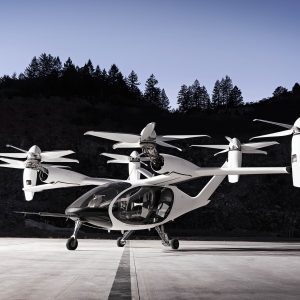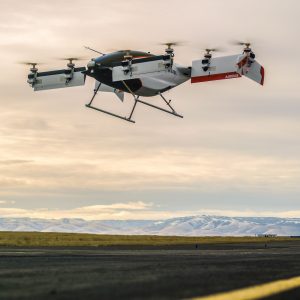
When it comes to electric vertical takeoff and landing (eVTOL) aircraft, it’s no small feat staying abreast of how rapidly the technology behind this emerging transportation market is maturing. Estimates of the number of research and development programs worldwide vary widely, but knowledgeable industry players believe there are approximately 200 programs at various stages of maturity, with more on the way, as startups enter the race to commercialize their idea of a better “mousetrap.” Not all of these programs will have the financial resources or the engineering prowess to survive, but their numbers attest to the birthing of a brand-new aviation sector that will push the limits of various digital technologies and the internet of things.
No less significant are the hundreds of millions of dollars flowing into eVTOL programs to supplement the huge sums of money that the world’s two biggest commercial aircraft builders, Boeing and Airbus, are channeling into their own R&D projects. Bell Helicopter has done the same.
Add to this the substantial stakes that major automotive companies have committed to what they believe is the inevitability of eVTOL as an essential component of 21st-century urban mobility and it is no small wonder that “Closer than you think” has become the unofficial mantra of the urban air mobility industry (UAM).

Most of the money funding eVTOL development is venture capital. TexasUP, a recent eVTOL investor summit in Fort Worth, drew about 160 developers and venture capitalists. Altogether, they represented an estimated $100 billion of investable capital. A year-long study on the future of UAM completed in 2019 by NEXA Advisors indicated there will be an inflection point, nominally in the 2030 to 2040 timeframe, when certified automated systems can permit pilotless passenger flights. This is where the market will start to grow exponentially, to an estimated 1.3 billion passengers over a 20-year period, with a demand for 28,000 eVTOL aircraft, according to Michael Dyment, managing director. Numerous eVTOL prototypes around the world are either in or nearing advanced stages of development and operational trials of one kind or another. Nearly all are designed to be piloted, at least initially.

Joby Aviation recently raised a $590-million Series C round of funding, including $394 million from lead investor Toyota Motor Corporation, for the eVTOL air-taxi vehicle it’s developing. Joby is seeking to benefit from Toyota’s manufacturing experience in building the craft, which Joby claims will be “near-silent when flying overhead.” Concurrently, Uber has signed a multiyear commercial contract with Joby to “launch a fast, reliable, clean and affordable urban air taxi service in select markets.”
But there’s one notable exception: Cora. This two-seat craft being developed by Wisk, a joint venture startup between Boeing and Kitty Hawk, is designed to be autonomous from the start. It’s equipped with a parachute recovery system, among other discrete safety features. Cora is powered by 12 boom-mounted independent lifting propellers for vertical flight. They’re distributed along a 36-ft-span wing that supports forward flight an aft-mounted pusher propeller that propels it forward. Powering all propellers is a pack of lithium-ion batteries. The aircraft has a range of 30 to 60 miles, with reserves.The New Zealand Civil Aviation Authority, which has been working with Wisk and its predecessor companies for several years, expects to certify Wisk to begin passenger-carrying trials this year. “Based on the analysis we’ve done from a commuter perspective, when we are attacking (the 30 to 60-mile range] market most of it says you are looking at 1.6 to 1.7 riders per vehicle,” said Wisk CEO Gary Gysin. “Clearly that data comes from the automotive market, but we think that extrapolates into [the eVTOL] market.”

Airbus essentially shares the same vision as Boeing—eVTOL is the future. The French company grouped its experimental eVTOL work with other urban air mobility projects, including the Voom on-demand UAM aircraft. Under the new Airbus Urban Mobility business unit, the company is using data from its flight test demonstrators to plan what comes next. Airbus’s Vahana autonomous eVTOL concept aircraft, developed by the company’s advanced technology facility in Silicon Valley, completed its flight test program last November. The tilt-wing vehicle is powered by lithium-ion batteries. Further evidence of eVTOL’s momentum is the steps aviation suppliers are taking to support companies developing eVTOL aircraft, providing a wide range of products to a growing list of customers.
